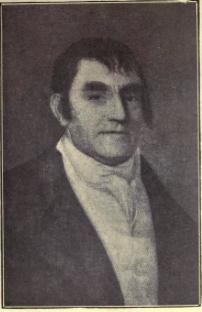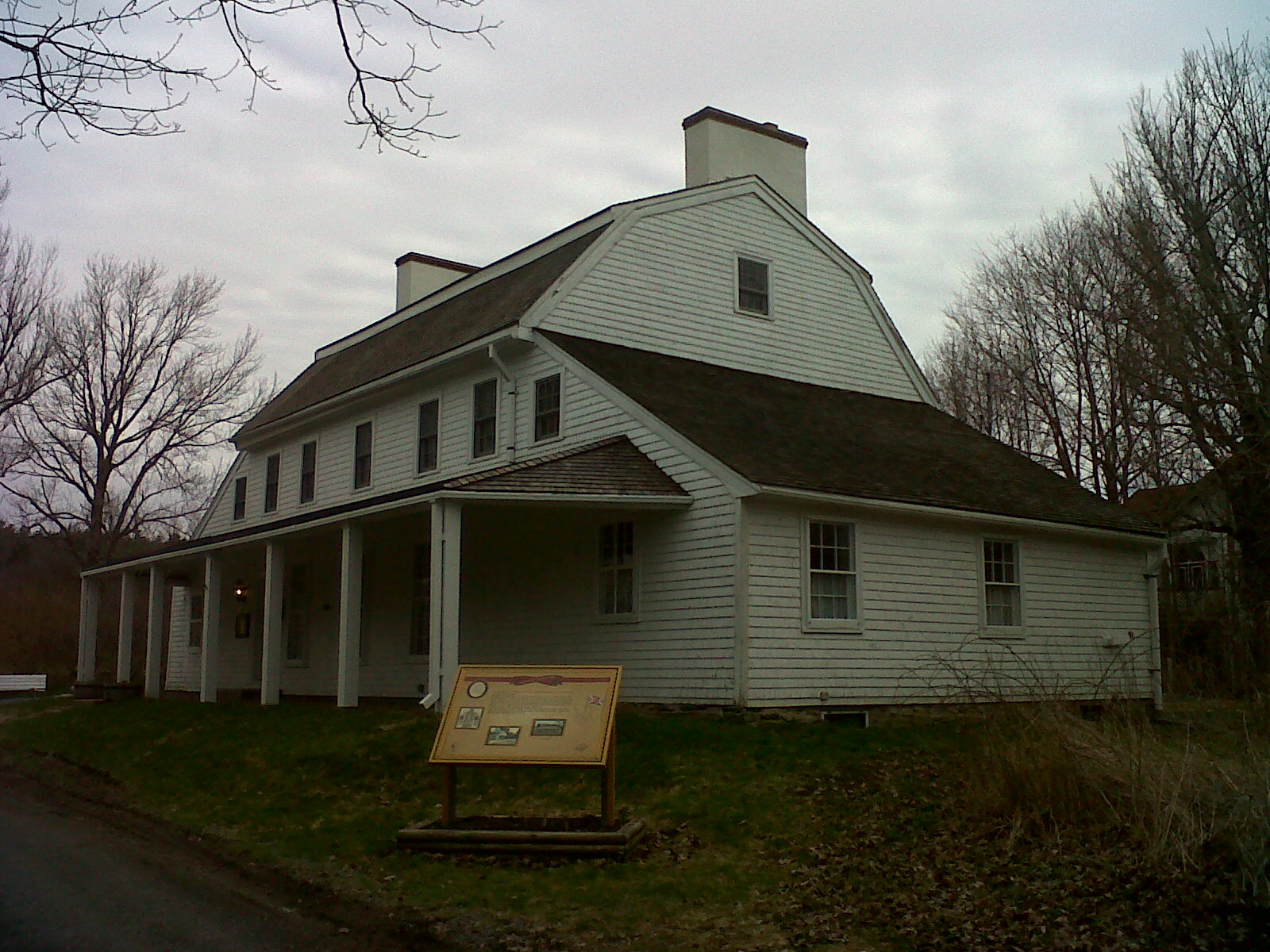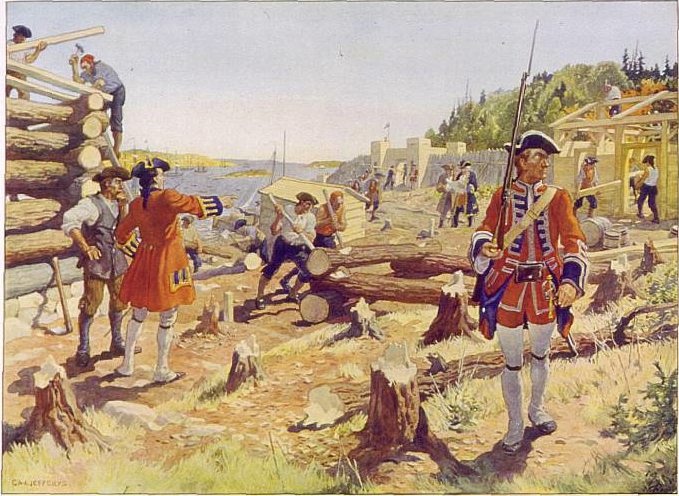|
Halifax Harbour
Halifax Harbour is a large natural harbour on the Atlantic coast of Nova Scotia, Canada, located in the Halifax Regional Municipality. Halifax largely owes its existence to the harbour, being one of the largest and deepest ice-free natural harbours in the world. Before Confederation it was one of the most important commercial ports on the Atlantic seaboard. In 1917, it was the site of the world's largest man-made accidental explosion, when the blew up in the Halifax Explosion of December 6. The harbour was formed by a drowned glacial valley which succumbed to sea level rise after glaciation. The Sackville River now empties into the upper end of the harbour in Bedford Basin. The harbour also includes the Northwest Arm and The Narrows, a constricted passage to Bedford Basin Halifax Harbour has been polluted as a result of two centuries of direct raw sewage discharge into its waters. Health concerns in the 1990s caused the shut-down of all harbour beaches. The Harbour Solutions ... [...More Info...] [...Related Items...] OR: [Wikipedia] [Google] [Baidu] |
Deadman's Island (Nova Scotia)
Deadman's Island is a small peninsula containing a cemetery and park located in the Northwest Arm of Halifax Harbour in Nova Scotia, Canada. The area was first used as a training grounds for the British military, and later became a burial ground for dead prisoners of war from nearby Melville Island. In the early 1900s the site became an amusement park before being annexed to the city of Halifax in the 1960s. Though development projects were considered for the site, these plans met with popular protest, and instead Deadman's Island became a heritage park, Deadman's Island Park. Geography Despite its name, Deadman's Island is not an island at all, but a peninsula that protrudes into the Northwest Arm of Halifax Harbour east of Melville Island. Connected to the mainland by a thin wedge of land, it is a "swampy spit...surmounted by a piney knoll". The cove on its eastern side, characterized as "likely areas for the discovery of pre-Contact remains," supports a significant fish popul ... [...More Info...] [...Related Items...] OR: [Wikipedia] [Google] [Baidu] |
McNabs Island
McNabs Island (formerly Cornwallis Island) is the largest island in Halifax Harbour located in Halifax Regional Municipality, Nova Scotia, Canada. It played a major role in defending Halifax Harbour and is now a provincial park. The island was settled by Britons in the 1750s and later by Peter McNab (Settler), Peter McNab, and McNab family members lived on the island until 193 History The island saw seasonal Mi'kmaq people, Mi'kmaq and Acadian use and was surveyed by the French Navy as a possible site for a fortified seaport prior to the selection of Fortress Louisbourg, Louisbourg. After the founding of Halifax, Nova Scotia, Halifax in 1749, it was first known as Cornwallis Island. One of the early settlers was Joseph Rous (1758), brother of John Rous. Halifax merchant Joshua Mauger used the long beach which still bears his name as a base for a fishing operation in the 1750s and 1760s. In the 1780s, the island was purchased by Peter McNab (d. 1799, buried at Old Burying Ground ( ... [...More Info...] [...Related Items...] OR: [Wikipedia] [Google] [Baidu] |
Europe
Europe is a large peninsula conventionally considered a continent in its own right because of its great physical size and the weight of its history and traditions. Europe is also considered a Continent#Subcontinents, subcontinent of Eurasia and it is located entirely in the Northern Hemisphere and mostly in the Eastern Hemisphere. Comprising the westernmost peninsulas of Eurasia, it shares the continental landmass of Afro-Eurasia with both Africa and Asia. It is bordered by the Arctic Ocean to the north, the Atlantic Ocean to the west, the Mediterranean Sea to the south and Asia to the east. Europe is commonly considered to be Boundaries between the continents of Earth#Asia and Europe, separated from Asia by the drainage divide, watershed of the Ural Mountains, the Ural (river), Ural River, the Caspian Sea, the Greater Caucasus, the Black Sea and the waterways of the Turkish Straits. "Europe" (pp. 68–69); "Asia" (pp. 90–91): "A commonly accepted division between Asia and E ... [...More Info...] [...Related Items...] OR: [Wikipedia] [Google] [Baidu] |
Melville Cove, Halifax
Melville Cove is a residential subdivision in Armdale on Mainland Halifax within the Halifax Regional Municipality Nova Scotia on the shore of the Northwest Arm in Halifax Harbour Halifax Harbour is a large natural harbour on the Atlantic coast of Nova Scotia, Canada, located in the Halifax Regional Municipality. Halifax largely owes its existence to the harbour, being one of the largest and deepest ice-free natural harbo ... . References Destination Nova Scotia Communities in Halifax, Nova Scotia {{HalifaxNS-geo-stub ... [...More Info...] [...Related Items...] OR: [Wikipedia] [Google] [Baidu] |
Armdale Yacht Club
The Armdale Yacht Club is a yacht club located on Melville Island, at the head of Halifax Harbour's Northwest Arm in Nova Scotia, Canada. The Club's property has a history dating to 1732. Melville Island Since the arrival of European settlers in the area, Melville Island has been a family estate, hospital, quarantine station, military prison, prisoner of war camp, recruit training station for the British Foreign Legion, ammunition depot and most recently a yacht club. Partnerships The AYC has reciprocal agreements with other yacht clubs, e.g. Britannia Yacht Club The Britannia Yacht Club (BYC) is a private social club, yacht club and tennis club based in Britannia, Ottawa, Ontario, Canada. It was founded in 1887 by a group of cottagers. BYC is located on an extension of land at the eastern end of Lac ... References External links Armdale Yacht Club Yacht clubs in Canada Sports venues in Halifax, Nova Scotia 1947 establishments in Nova Scotia {{NovaScot ... [...More Info...] [...Related Items...] OR: [Wikipedia] [Google] [Baidu] |
Melville Island (Nova Scotia)
Melville Island is a small peninsula in Nova Scotia, Canada, located in the Northwest Arm of Halifax Harbour, west of Deadman's Island (Nova Scotia), Deadman's Island. It is part of the Halifax Regional Municipality. The land is rocky, with thin, acidic soil, but supports a limited woodland habitat. The site was discovered by Europeans in the 17th century, though it was likely earlier explored by Indigenous peoples. It was initially used for storehouses before being purchased by the British, who built a prisoner-of-war camp to hold captives from the Napoleonic Wars and later the War of 1812. The burial ground for prisoners was on the adjacent Deadman's Island. Later, Melville Island was used as a receiving depot for Black Refugee (War of 1812), Black refugees escaping slavery in the United States, then as a quarantine hospital for immigrants arriving from Europe (particularly Ireland). It briefly served as a recruitment centre for the British Foreign Legion during the Crimean War ... [...More Info...] [...Related Items...] OR: [Wikipedia] [Google] [Baidu] |
War Of 1812
The War of 1812 (18 June 1812 – 17 February 1815) was fought by the United States of America and its indigenous allies against the United Kingdom and its allies in British North America, with limited participation by Spain in Florida. It began when the United States declared war on 18 June 1812 and, although peace terms were agreed upon in the December 1814 Treaty of Ghent, did not officially end until the peace treaty was ratified by Congress on 17 February 1815. Tensions originated in long-standing differences over territorial expansion in North America and British support for Native American tribes who opposed US colonial settlement in the Northwest Territory. These escalated in 1807 after the Royal Navy began enforcing tighter restrictions on American trade with France and press-ganged men they claimed as British subjects, even those with American citizenship certificates. Opinion in the US was split on how to respond, and although majorities in both the House and ... [...More Info...] [...Related Items...] OR: [Wikipedia] [Google] [Baidu] |
Burnside, Nova Scotia
Burnside is a Canadian urban neighbourhood located along the northeast shore of Bedford Basin of the Halifax Regional Municipality in Dartmouth, Nova Scotia. History Burnside was the name originally given to the farm of Duncan Waddell, a Scotsman who had settled the area. ''Burn'' comes from the Scottish word for "stream", since one flowed through the property. Gradually, his land was sold off to various industries, including National Gypsum, a brickyard, a steel company, an oil terminal, and the Bedford Magazine. More recently, Burnside has been the location of a major concentration of industry and commercial development since the 1970 completion of the A. Murray MacKay Bridge near the previously existing Industrial Estate, which had only 4 enterprises prior to the bridge opening. There are very few dwellings in Burnside as it is used almost exclusively for commercial operations; the only residential areas being the adjacent communities of Highfield Park, Albro Lake and Wr ... [...More Info...] [...Related Items...] OR: [Wikipedia] [Google] [Baidu] |
Bedford, Nova Scotia
Bedford is a community of the Halifax Regional Municipality, in Nova Scotia, Canada. History The area of Bedford has evidence of Indigenous peoples dating back thousands of years. Petroglyphs are found at Bedford Petroglyphs National Historic Site. The Bedford area is known as Kwipek to the Mi'kmaq First Nation. 18th century On 21 July 1749, Father Le Loutre's War began when Edward Cornwallis arrived to establish Halifax with 13 transports. The British quickly began to build other settlements. To guard against the Acadians, the French, and the Mi'kmaq, British fortifications were erected in Halifax (1749), Bedford (Fort Sackville) (1749), Dartmouth (1750), Lunenburg (1753) and Lawrencetown (1754). The history of Bedford began when Governor Edward Cornwallis organised his men and began the construction of a road leading to Minas Basin on the Bay of Fundy after establishing the garrison at Halifax. To protect it, he hired John Gorham and his Rangers to erect a fort on the ... [...More Info...] [...Related Items...] OR: [Wikipedia] [Google] [Baidu] |
Citadel Hill (Fort George)
Citadel Hill is a hill that is a National Historic Site in Halifax, Nova Scotia, Canada. Four fortifications have been constructed on Citadel Hill since the city was founded by the English in 1749, and were referred to as Fort George—but only the third fort (built between 1794 and 1800) was officially named Fort George. According to General Orders of October 20, 1798, it was named after King George III. The first two and the fourth and current fort, were officially called the Halifax Citadel. The last is a concrete star fort. The Citadel is the fortified summit of Citadel Hill. The hill was first fortified in 1749, the year that Edward Cornwallis oversaw the development of the town of Halifax. Those fortifications were successively rebuilt to defend the town from various enemies. Construction and leveling have lowered the summit by ten to twelve metres. While never attacked, the Citadel was long the keystone to defence of the strategically important Halifax Harbour and its Roy ... [...More Info...] [...Related Items...] OR: [Wikipedia] [Google] [Baidu] |
Drumlin
A drumlin, from the Irish word ''droimnín'' ("littlest ridge"), first recorded in 1833, in the classical sense is an elongated hill in the shape of an inverted spoon or half-buried egg formed by glacial ice acting on underlying unconsolidated till or ground moraine. Assemblages of drumlins are referred to as fields or swarms; they can create a landscape which is often described as having a 'basket of eggs topography'. The low ground between two drumlins is known as a dungeon; dungeons have colder microclimates in winter from settling cold air. Morphology Drumlins occur in various shapes and sizes, including symmetrical (about the long axis), spindle, parabolic forms, and transverse asymmetrical forms. Generally, they are elongated, oval-shaped hills, with a long axis parallel to the orientation of ice flow and with an up-ice (stoss) face that is generally steeper than the down-ice (lee) face. Drumlins are typically 250 to 1,000 meters long and between 120 and 300 meters wide ... [...More Info...] [...Related Items...] OR: [Wikipedia] [Google] [Baidu] |
Georges Island (Nova Scotia)
Georges Island (named after George II of Great Britain) is a glacial drumlin and the largest island entirely within the harbour limits of Halifax Harbour located in Nova Scotia's Halifax Regional Municipality. The Island is the location of Fort Charlotte - named after King George's wife Charlotte. Fort Charlotte was built during Father Le Loutre's War, a year after Citadel Hill (Fort George). The island is now a National Historic Site of Canada. As of August 6, 2020, the island is open to the public on the weekends (and Fridays during peak summer season), from June until Thanksgiving weekend. History The island was originally named ''île à la Raquette'' which means Snowshoe Island. For a brief time, the Island was known as ''île d'Enville'', named after the leader of the great Duc d’Anville Expedition who was buried on the island for a number of years. In 1749, the island was named "George Island" after King George II, and then finally, in 1963, it was renamed "Georges Is ... [...More Info...] [...Related Items...] OR: [Wikipedia] [Google] [Baidu] |





